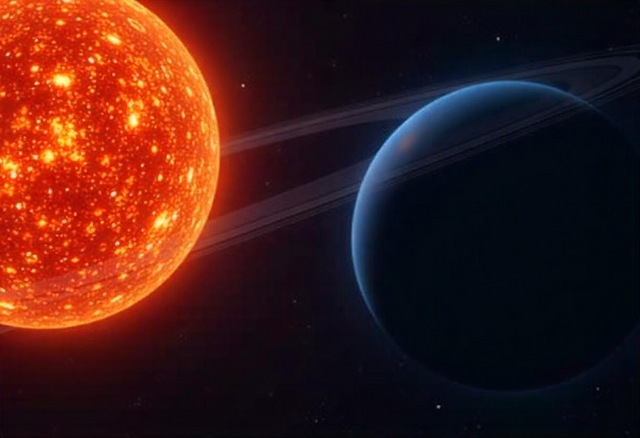99.7% probability of life on exoplanet K2-18 b
99.7% probability of life on exoplanet K2-18 b

A study dated April 17, 2025 has been published in the Astronomical Journal Letters with the title “New Constraints on DMS and DMDS in the Atmosphere of K2-18 b from JWST MIRI” with free access, it is shown how operating with the MIRI instrument of the James Web Telescope a possible existence of two molecules dimethyl sulfide DMS and dimethyl disulfide DMDS are observed, which are potentially gases Biomarkers.

Souce
The image shows a typical Kirchhoff and Bunsen spectroscopy, this is obtained by pointing the telescope at the constellation of Leo the lion, there is a star that is not visible to the naked human eye because it is very small and not very bright, it is a red dwarf star only 124 years old, here with half the mass and radius of the sun and an age of about 3,000 million years, a star discovered in 2009 by the Kepler space telescope with the name K218.

There are millions of red dwarfs like this in the sky and it is not particularly interesting, what is interesting is that an exoplanet called K2-18B, a sub-Neptunian planet, revolves around it, because it is somewhat smaller than Neptune but larger than the Earth with a radius of about 2.6 times greater than that of our planet and a mass eight times that of the Earth. This planet is in the habitable region of this star. the one that the Earth receives from the Sun, that is, it is in a region such that this planet could have liquid water.

The special thing about K2-18B is in its atmosphere, thanks to spectroscopy its atmosphere is studied, an atmosphere a priori rich in hydrogen, in 2019 an almost confirmed presence of water vapor is observed in this atmosphere, so we begin to see signs of a possible ocean on the planet, even more interesting, in 2023 the James Web telescope points to the planet and detects carbon dioxide and methane in the atmosphere, two gases also existing in our atmosphere, so it begins to show promising signs, without However, the boom comes this April 17, 2025 where data from the same telescope point to the existence in the atmosphere of Dimethyl Sulfide or DMS and Dimethyl Disulfide or DMDS.
The images without reference were created with AI
Thank you for visiting my blog. If you like posts about #science, #planet, #politics, #rights #crypto, #traveling and discovering secrets and beauties of the #universe, feel free to Follow me as these are the topics I write about the most. Have a wonderful day and stay on this great platform :) :)
This is an exciting discovery. I'm eager to see what else we learn about the planet (K2-18B) in the future.
I guess that this means that the star is 124 light years away, right?
Yes, it's impressive, and to think there are hundreds of planets like that in that galaxy alone.
Yes exactly, that is.
greetings